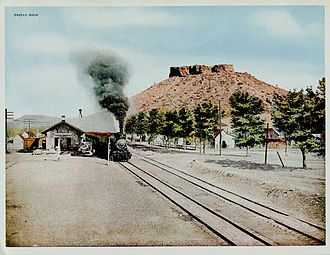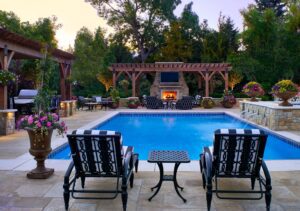Landscaping with rocks is a timeless and versatile way to elevate the beauty of your outdoor space. Whether you’re designing a lush garden, creating functional pathways, or adding visual interest to your yard, rocks can be both practical and aesthetically pleasing. They enhance your home’s aesthetic.They are durable, low-maintenance, and come in a wide variety of shapes, sizes, and colors to suit any style.
With this guide, we’ll explore innovative landscaping ideas with rocks, discuss their benefits, and provide tips for incorporating them into your outdoor design. Whether you’re starting from scratch or enhancing an existing landscape, these ideas will inspire you to create a stunning outdoor environment.
Why Use Rocks in Landscaping?
1. Durability and Longevity
Rocks are one of the most durable materials you can use in landscaping. Unlike plants or organic mulch that require regular upkeep, rocks maintain their appearance for years with minimal maintenance. They withstand harsh weather conditions, making them ideal for both hot climates and areas prone to heavy rainfall.
Moreover, rocks are resistant to pests and decay, which means they won’t attract insects or break down over time like wood chips or bark mulch might. This longevity makes them a cost-effective choice for homeowners looking for a low-maintenance solution.
2. Versatility in Design
One of the greatest advantages of using rocks in landscaping is their versatility. They can be used to create pathways, garden borders, retaining walls, or even decorative focal points. With a wide range of textures and colors, you can customize your design to complement your home’s architecture and overall aesthetic.
For instance, smooth river rocks can add a natural touch to water features, while crushed gravel is perfect for creating rustic pathways. Larger boulders can serve as striking focal points in gardens or alongside driveways.
Creative Landscaping Ideas with Rocks
1. Rock Gardens for Visual Interest
A rock garden is an excellent way to showcase the beauty of stones while incorporating drought-resistant plants like succulents or ornamental grasses. It can also help improve your gardening. To create a rock garden:
- choose a variety of rock sizes for depth and dimension;
- arrange larger boulders as focal points;
- aill gaps with smaller stones and drought-tolerant plants.
This type of garden is not only visually appealing but also requires minimal watering and maintenance.
2. Pathways and Walkways
Rocks are ideal for creating functional yet attractive pathways in your yard. Gravel or crushed stone paths are easy to install and provide excellent drainage during rainy seasons. For a more polished look:
- Use stepping stones or flagstones;
- Line the edges with river rocks or pebbles for contrast.
Adding mulch between larger stones can enhance traction while creating a cohesive design.
Types of Rocks for Landscaping
1. River Rocks
River rocks are smooth, rounded stones that come in various sizes and colors. They are perfect for creating natural-looking water features, lining pathways, or filling garden beds. Their soft texture adds a calming element to any landscape design.
2. Crushed Gravel
Crushed gravel is a versatile option that works well for patios, driveways, and pathways. Its rough texture provides excellent traction, making it ideal for high-traffic areas. Additionally, it allows for good drainage and can be easily shaped to fit various designs.
3. Lava Rocks
Lava rocks are lightweight and porous stones that retain heat well. They are often used in xeriscaping designs or as mulch alternatives in garden beds. Additionally, their unique texture adds visual interest, and they help suppress weeds while promoting soil aeration.
4. Boulders
Large boulders can serve as dramatic focal points in your front yard or be used to build retaining walls. Their size and weight make them ideal for stabilizing sloped areas. Additionally, they provide habitat for wildlife and can enhance the natural aesthetic of your landscape.
Tips for Incorporating Rocks into Your Landscape
1. Plan Your Design Carefully
Before purchasing materials, sketch out your landscape design on paper or use digital tools to visualize the layout. Consider factors such as:
- The size of your yard;
- The purpose of each area (e.g., relaxation vs functionality);
- The types of plants you’ll pair with the rocks.
Careful planning of your design ensures a harmonious and functional layout, maximizing both the utility and aesthetics of your garden.
2. Combine Rocks with Other Elements
Rocks pair beautifully with other landscaping materials like mulch, plants, and water features. For example:
- Use mulch around trees and shrubs while lining the edges with decorative stones;
- Combine river rocks with small waterfalls or ponds for a natural look.
This combination adds texture and depth to your landscape while maintaining balance.
Benefits of Using Rocks in Landscaping
1. Low Maintenance
Rocks require little upkeep compared to other landscaping materials like grass or organic mulch. They don’t need watering, fertilizing, or frequent replacement—making them perfect for busy homeowners.
2. Weed Prevention
When used with landscape fabric underneath, rocks act as an effective barrier against weeds by blocking sunlight from reaching the soil. This method not only minimizes weed growth but also reduces the need for chemical herbicides, promoting a healthier garden ecosystem.
3. Improved Drainage
Rocks allow water to flow freely through them, reducing pooling and erosion issues in your yard. Their porous nature helps prevent water buildup and promotes healthy soil. Furthermore, incorporating rocks can enhance the aesthetic appeal while creating a more sustainable landscape.
Frequently Asked Questions (FAQ)
- What type of rock is best for pathways?
Crushed gravel or decomposed granite works best for pathways due to their compact nature and excellent drainage properties.
- How do I prevent weeds from growing through landscaping rocks?
Use high-quality landscape fabric beneath the rocks to block weed growth while allowing water drainage.
- Are rocks better than mulch for landscaping?
Both have their advantages—rocks are more durable and low-maintenance, while mulch improves soil quality over time by adding nutrients as it decomposes.
- Can I install landscaping rocks myself?
Yes! Many rock landscaping projects are DIY-friendly if you have basic tools like shovels and wheelbarrows.
- How much do landscaping rocks cost?
Prices vary depending on the type of rock but generally range from $45–$130 per ton for materials like river rocks or gravel.
- Do rocks affect soil temperature?
Yes—rocks can increase soil temperature by retaining heat during the day, which may stress certain plants during hot weather.Landscaping with rocks offers endless possibilities for creativity while providing practical benefits like durability and low maintenance! By carefully selecting materials that suit both aesthetic preferences & functional needs—you’ll transform outdoor spaces into stunning landscapes tailored perfectly toward enhancing property appeal alike !




